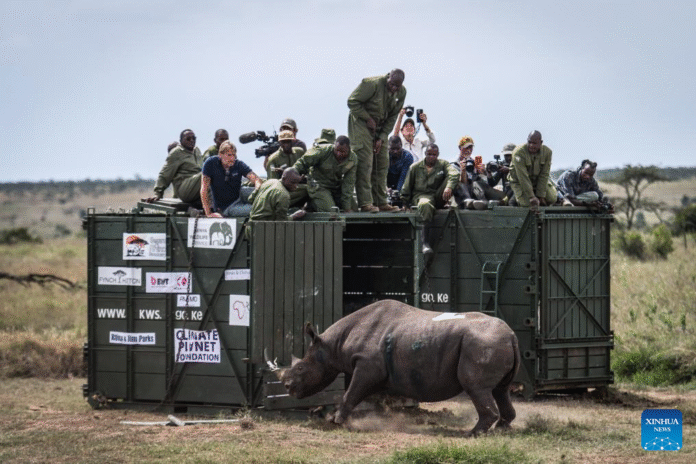The Kenya Wildlife Service (KWS) has commenced the translocation of 21 endangered eastern black rhinos from Ol Pejeta Conservancy to Segera Conservancy in Laikipia.
The historic move, flagged off by Tourism and Wildlife Cabinet Secretary Rebecca Miano, is part of the National Black Rhino Action Plan that aims to increase the country’s rhino population to 2,000 by the year 2037.
Kenya, which proudly safeguards over 80% of Africa’s remaining eastern black rhinos, is taking a proactive approach in decongesting overpopulated sanctuaries such as Ol Pejeta, Lewa, and Lake Nakuru. The selected destination, Segera Conservancy, is emerging as a secure and ecologically rich habitat ideal for breeding and expanding the rhino’s range.
“This operation is not just about relocation; it’s about regeneration,” said CS Miano. “It reflects Kenya’s unmatched commitment to protecting its wildlife heritage through strategic, science-backed decisions.”
KWS Director General Erustus Kanga described the 18-day exercise as a product of meticulous planning and field expertise. “Every horn counts. Every move must be flawless. This is conservation at its most intense,” Kanga remarked.
Three rhinos will be moved at a time, with rest intervals to minimize stress. A dedicated veterinary team will accompany each animal, ensuring their safety and health. May’s cool and dry conditions provide the ideal window for the operation.
Segera’s inclusion in Kenya’s rhino conservation map signals a major win for public-private partnerships. “By engaging communities and private conservancies, we’re building a model where wildlife thrives and people benefit,” Miano emphasized.
As the rhinos begin their new chapter, Kenya once again asserts its leadership in bold, innovative conservation—grounded in collaboration, vision, and resolve.



















